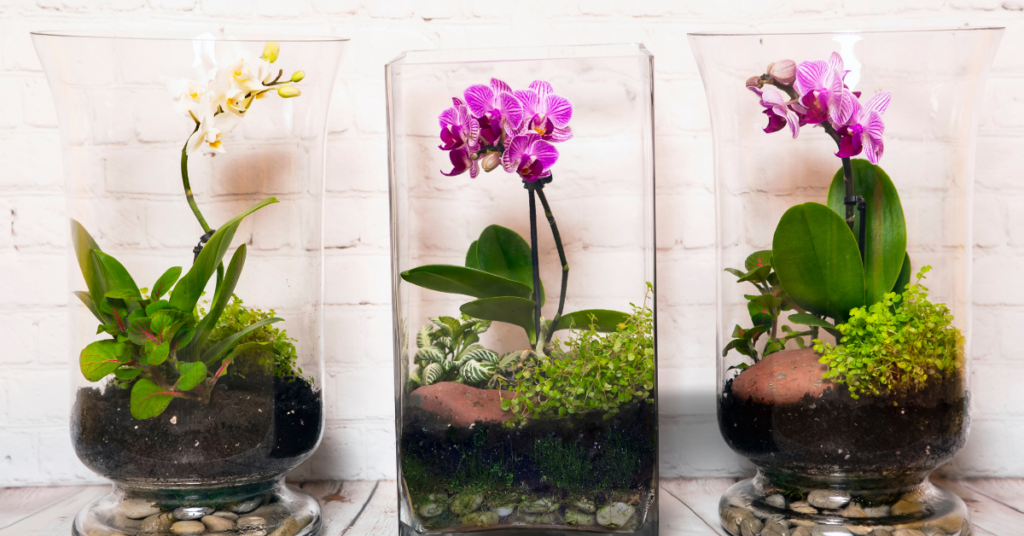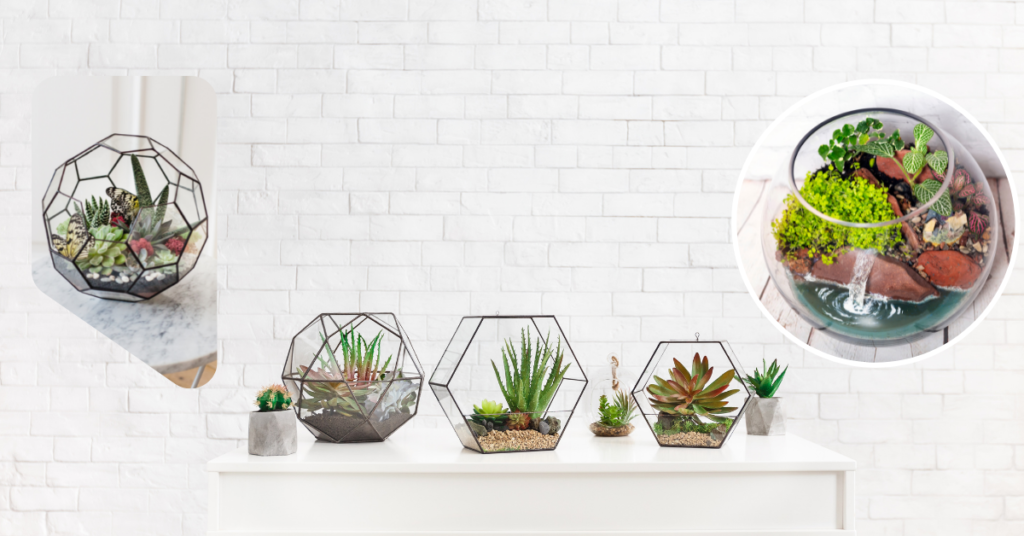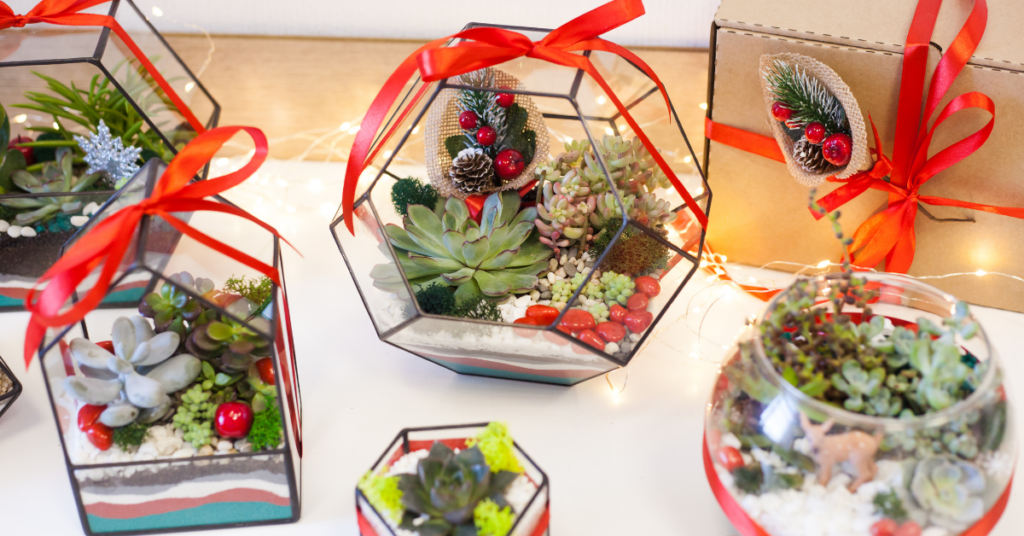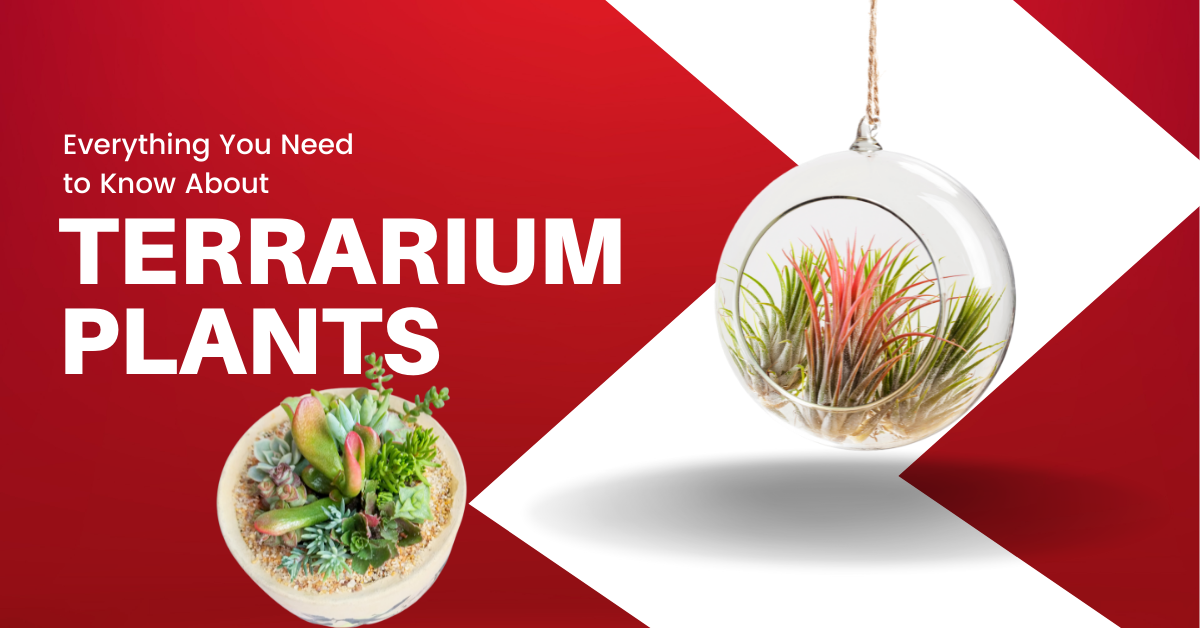Have you been dreaming about modeling your own terrarium for a long time, but have no clue where and how to start working on it? Well, it is no surprise that when you share your dream project with others, the first thing they ask you is what exactly is Terrarium Plants?
This is where it gets more interesting. Your definition and explanation of the terrarium will either create interest to the listeners or will make the entire process boring and dull. So, let this article help you choose your words carefully so that you get an excited partner to model your beautiful dream terrarium project.
The word Terrarium in simple words means miniature gardens, sheltered inside a small sealed container, mostly jars, tanks, and bottles. It is the recreation of nature scenes like the jungles or forests as a miniature model. They are more like the aquarium, where in place of water and fish, it has earth and plants. Terrarium is a Latin word, meaning earth for Terra and receptacle or a place for Arium.
It is a functioning ecosystem designed with Terrarium Plants. They are self-sustaining, where the plants water themselves through condensation and transpiration. They do not occupy much space and need very minimal maintenance and care. Winding up, Terrarium is unique, creative, beautiful, and interesting. They play the finest role to keep Indoor plants in a beautiful and contemporary way, presenting a royal and elegant look.
Table of Contents
How Did Terrarium Come in Trend?

This may come as a little surprise to many, but the terrarium came into existence by a botany accident. Amazed by its beauty and self-sustaining qualities, terrarium very soon became a trend for the elites. The exotic plants soon had many lovers, and slowly spread to the other parts of the world as well.
Terrariums make up the perfect option for those who love natural sceneries but have problems with space for plants, or for those, who love exotic plants collection. Building a terrarium does not require rocket science study. It is a very simple process where the intersection of science and art takes place. It is a great and interesting project which you can do with your kids too. They make up a unique and attractive gift for your loved ones, which you can safely send to your loved ones through the Best online plant delivery in India.
How does Terrarium Work?
It’s time to refresh your school memories as it involves a lesson in the carbon cycle and water cycle. This functioning works well with the closed Terrarium which is the miniaturized ecosystem.
The sun’s warmth causes moisture because of which evaporation takes place from the soil and plants. Then condensation takes place inside the container making the inner surface cool. The water then slowly drips down to the soil, and the entire process starts all over again.
The plants get the nutrients from the soil. The nutrients are restored into the soil when the plants die and decompose in it.
Although you will need a little effort and learning to get the entire terrarium right, as it is vulnerable to changes in temperature, light, and plant species. However, if you follow the right techniques and methods of modeling the terrarium and pick the right terrarium plants, then you will be guaranteed 100% success. For instance, you will have to choose the plants that have similar care and requirements. You cannot mix desert cactus plants with African violet humidity plants. This will only result in disaster. The plants in your terrarium must have the same requirements of feeding, watering, and humidity.
Also, while choosing terrarium plants, you must keep the following thumb rules in mind.
- The plants must not outgrow the terrarium container
- They should bloom in indirect sunlight also
- They must withstand humidity
Types of Terrarium

Terrarium come in all shapes and sizes. The only rule is it must be modeled in a glass container, and then the choice is completely yours. You can also build your tiny terrarium in a salt shaker, or a big one in a tabletop greenhouse.
The Types of Terrarium are decreed by which plants you grow in it, like succulent terrarium, tropical terrarium, etc. Out of everything, two types of terrarium dictate the entire modeling process. They are the
- Closed terrarium – They are the classic type, where the terrarium is closed with a lid. It traps the moisture and air inside. They can perfectly survive for many good decades, without the need for watering. It is because they create their own ecosystem. However, one must keep in mind that this type must never be kept in direct sunlight as it will disrupt the ecosystem and also bake the plants’ leaves.
- Open terrarium – As the name suggests, an open terrarium does not have a lid and allows water evaporation and airflow. This type requires regular care and maintenance while needing regular watering. They can be placed anywhere, even in direct sunlight with no worries.
Terrarium Container Ideas
As said earlier, a terrarium can be modeled in anything, provided the container is made from glass. Other popular container ideas include
- Cloche
- Bowl
- Bottle
- Jar
- Coffee carafe
- Cup
- Lantern
- Teapot
- Fish tank
- Tabletop greenhouse, etc.
All it needs is a little creative and out-of-the-box ideas, and you can make your perfect cute terrarium in anything you like.
Terrarium Plants

There are varieties of plants that will survive well in a terrarium. But you must make sure that the combination you design must have the same basic requirements. You can also mix up colors, along with small and large plants. This way, it will be more appealing and attractive.
Getting hold of terrarium plants is not a difficult task. You can easily Buy Plant Online or at nurseries near you. Make sure you buy in the Best online nursery for plants, so that you are not compromised in its quality in any way.
Some of the popular and recommended terrarium plants are as follows.
- Air plants
- African violet
- Cactus
- Aloe Vera
- Friendship plant
- Baby’s tears
- Pothos
- Ivy
- Moss
- Thyme
- Spider fern, and many more.
How to Care for Terrarium Plants
A Terrarium is very easy to care for and maintain. You will only have to keep a few things in mind so that your little nature project does not fall down soon. They are as follows.
- Keep your terrarium away from direct sunlight as it will burn the leaves and damage the container
- Once in 1-2 weeks, water your open terrarium regularly. Make sure you water in the soil and not in the plants. In the case of a closed terrarium, lightly spray during its initial days. Spray only when the soil becomes very dry.
- Trim off the plants that have outgrown the container, and try to keep the plants small. Make sure no plants touch the container as this way, it will stay longer. Dead branches and leaves must be removed. If you see any sign of plants getting brown, rotting, withering, or yellowing, then immediately replace it with a new one.
- Make sure you model your terrarium with Oxygen producing indoor plants. However, most of the terrariums are Oxygen plants by nature.
Guide to DIY Terrarium
Step 1 – The first step is to clean your container using natural cleaning, non-toxic supplies, or going the classic way of cleaning with water and soap. Ensure it is thoroughly cleaned so that it makes no breathing space for fungus and molds.
Step 2 – The bottom must be covered
with layers of stones or pebbles. It must at least be an inch high so that the plants have a proper drainage system that prevents the root from rotting.
Step 3 – Next, layer it with activated charcoal. This will keep the mold and bacteria away from developing.
Step 4 – Then, layer at least two-inch of potting soil on the charcoal top. It is always advisable to get organic potting soil, as basic is always the best in terrarium cases. If you have succulent and cactus plants in mind, then it will require special soil.
By now, the container must be ¼ equal to the terrarium size.
Step 5 – Start by planting the tallest and largest plants first. Then work with the small plants. This will give you space for creativity and ideas. Make sure you do not crowd the plants for it needs space to grow.
Once you are done with the plants, you can add your personal touch by adding decorative stones, miniature houses, figurines, etc.
If you are looking for a place where you can get hold of the plants, ideas, and information, then Taru Vatika is the right destination. Check out today, and start modeling your dream terrarium.

